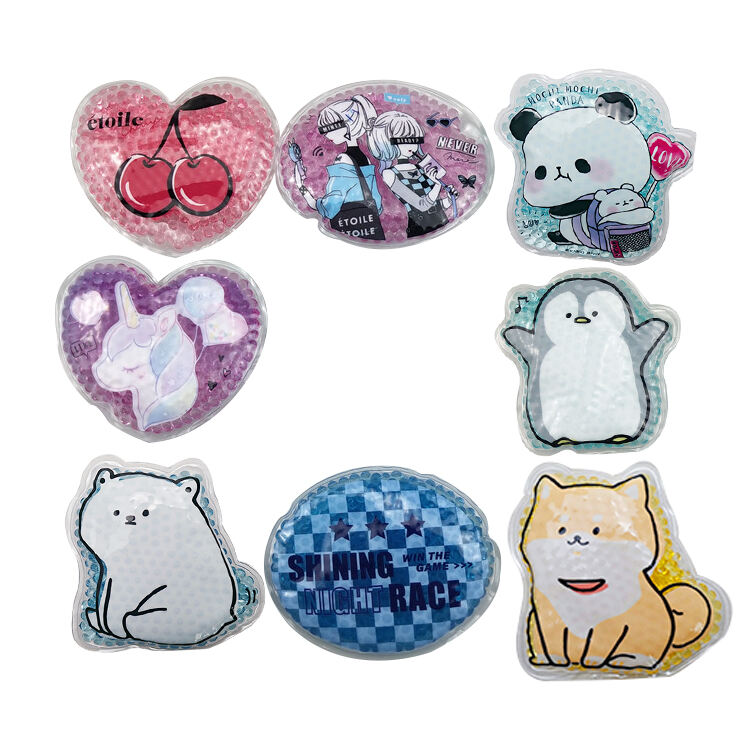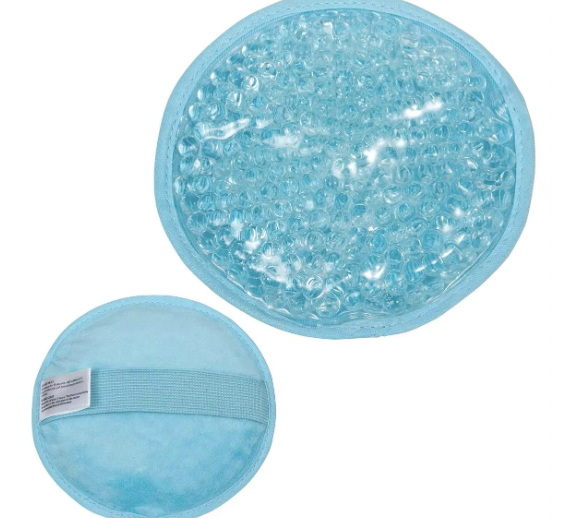Introduction - Overview of Heat Packs
What are Heat Packs
Heat packs work wonders when it comes to warming up tight spots on the body that need some attention. There are several types available nowadays. The gel kind bends easily around joints and stays put without slipping off. Clay packs have been around longer and give off a steady gentle heat that feels pretty good against sore backs or legs after a long day. Some people prefer electric models because they can adjust how hot things get depending on what feels best at the moment. Most contain stuff like glycerin or those little ceramic beads that spread out the heat evenly across the surface area. Whether someone wants to unwind after exercise or just needs relief from everyday aches, these packs do the trick pretty well for folks who don't want to reach for pills all the time.
Historical Use of Thermotherapy
Heat therapy goes way back to ancient times when different civilizations started using it for all sorts of health issues. The Egyptians and Greeks were among the first to apply heat for pain relief and healing purposes. Traditional Chinese medicine and Ayurveda also saw value in heat treatments, often heating special herbs or stones to help balance body energies. People kept using these methods throughout history because they work pretty well on muscles and general wellbeing. Recent archaeological finds show just how important heat therapy was considered back then. Manuscripts from Ayurvedic traditions and Chinese medical texts actually contain detailed instructions about applying heat for everything from arthritis to digestive problems, proving that our ancestors knew something about this stuff long before modern science caught up.
How Heat Interacts with Body Tissues
Applying heat to body tissues triggers some pretty important physiological reactions that help relax muscles and make tissues more flexible. Heat actually makes those collagen fibers in muscles and connective tissues stretch out more easily, which explains why people feel looser after getting warmed up. Research shows that when someone gets heated up, blood starts flowing better throughout the area. More blood means more oxygen and nutrients reach the cells, and metabolism kicks into high gear too. Better circulation isn't just about bringing stuff in though it also helps flush out all those metabolic wastes that build up during activity, keeping tissues healthier overall. People who suffer from either long term or sudden pain often notice improvements in their range of motion, fewer muscle cramps, and less general discomfort after regular heat treatments. Many physical therapists now include heat therapy as part of standard pain management plans because it really does make a difference in preserving muscle function and general well being.
Pain Relief - How Heat Packs Alleviate Muscle and Joint Pain
Mechanism: Relaxing Muscle Tension and Spasms
Putting heat on sore muscles remains one of those old fashioned but reliable ways to ease tension and get rid of those annoying muscle spasms. When we apply heat, what happens? The blood starts flowing better to that spot, which means more oxygen and nutrients reach the muscles, helping them actually relax instead of staying tight. Think about it compared to getting massaged or doing stretches every time something aches. Heat packs are just so much easier to use anywhere, anytime. A recent study in the Journal of Athletic Training found that heating up tight muscles works better than just sitting there stretching passively for relieving those uncomfortable spasms. What's great about this finding is how simple it makes things for people dealing with daily muscle pain at home without needing special equipment or professional help.
Reducing Joint Stiffness in Arthritis
Millions around the globe deal with arthritis every day, so managing pain becomes really important for people living with this condition. Heat therapy turns out to be pretty helpful in these situations because when joints get warmer, they tend to feel less stiff and move better overall. The reason behind this? Warmer temperatures actually make soft tissues more flexible while also boosting blood flow through the area, which helps knock down both pain levels and stiffness issues. Doctors specializing in rheumatology often suggest adding heat treatments to standard arthritis care routines. There's plenty of evidence supporting this approach too many studies have shown that folks who consistently use heat packs report noticeable improvements in how well their joints work and experience less discomfort during daily activities.
Heat Therapy vs. Cold Therapy for Different Pain Types
Deciding whether to go with heat or cold when treating an injury often leaves people scratching their heads since these treatments work differently. Heat packs tend to do wonders for those nagging aches from old muscles getting stiff or joints feeling tight after sitting too long. They help get blood flowing better and loosen up tissues that have become rigid over time. On the flip side, ice works best right after something happens suddenly, like twisting an ankle or bumping into something hard. The cold helps shrink swollen areas and takes away some of the sharp pain sensations by making blood vessels narrow down and slow things down inside. Research points out that neither option is universally better than the other though knowing what kind of problem someone has makes all the difference. Take sprained ankles for instance most folks reach for ice first which makes sense but many forget about switching to heat later on once the worst of the swelling goes away. That second step actually helps deal with lingering sore spots and stiffness that stick around even after the immediate damage starts healing.
Clinical Evidence Supporting Heat for Pain Management
Clinical research keeps backing up what many people already know works for managing pain through heat therapy. The studies show time and again that applying heat helps cut down on pain while also making movement easier for folks dealing with long term health problems. When looking at all the different ways researchers have tested this approach, there's no doubt that heat remains one of those simple treatments that doesn't require any surgery or complicated procedures. Organizations like the American Physical Therapy Association definitely stand behind using heat for various muscle and joint issues because it's so easy to get access to and actually works pretty well most of the time. All these findings just keep pointing towards the same conclusion: heat therapy stands out as something doctors recommend regularly when trying to help patients feel better and live more comfortably despite their discomfort.
Improved Circulation - Heat Packs Promote Blood Flow
Vasodilation: How Heat Expands Blood Vessels
When someone applies heat therapy, it causes vasodilation: basically when blood vessels expand and send more blood to wherever the treatment is applied. More blood flowing through means better transport of nutrients and oxygen to injured tissues, which speeds up healing and tissue regeneration. The actual mechanism involves warm temperatures relaxing those muscles surrounding blood vessels, making them open wider. Research over the years has shown pretty consistently that improved blood circulation really does help wounds heal faster and reduce discomfort. At a cellular level, all this extra activity creates conditions where cells can work harder and recover quicker. That's why many people find heat treatments so beneficial after injuries or during chronic pain management.
Enhanced Oxygen/Nutrient Delivery to Tissues
When blood vessels dilate during heat therapy, more blood flows through the body, which means oxygen and important nutrients get delivered faster to where they're needed most in our tissues. This actually makes heat treatments work better for healing injuries and keeping muscles healthy over time. The reason? Oxygen and those nutrients aren't just nice to have they're absolutely necessary for muscles to recover after workouts or injuries. They power up the cells so they can produce energy and start fixing damaged tissue. Studies done at various universities have shown that applying heat helps speed up these natural repair processes. That explains why athletes often report feeling better sooner when they combine heat packs with their regular recovery routines. Simply put, when we boost oxygen and nutrient supply through proper heating techniques, our bodies heal faster and perform better overall.

Accelerating Healing in Soft Tissue Injuries
Applying heat to soft tissue injuries really speeds up the healing process because it boosts blood flow around the affected area. Better circulation means more oxygen and nutrients get delivered where they're needed most during recovery. When combined with traditional rehab methods like stretching and strengthening exercises, patients often notice faster improvements. Research into these treatments consistently shows reduced healing times and improved functional outcomes after injury. For anyone dealing with strains, sprains or muscle damage, incorporating heat therapy into their recovery plan can make all the difference in getting back to normal activities sooner rather than later.
Relaxation - Heat Therapy Reduces Stress and Tension
Neurological Effects: Calming the Nervous System
The body's autonomic nervous system responds quite well to heat therapy, which helps reduce stress and tension in our daily lives. The warmth from these treatments actually triggers a calming response because it soothes those sensory nerves throughout the body, leading to better relaxation. Research suggests that applying warmth can really cut down on feelings of anxiety, which is why many people include heated pads or blankets in their mindfulness exercises and winding down routines. Incorporating heat into regular self care activities like meditation sessions or yoga practice makes sense for most folks looking to unwind after long days at work. Not only does it help them relax more deeply, but many report feeling generally happier and mentally refreshed afterward too.
Impact on Stress Hormones (Cortisol Reduction)
Exposure to heat seems to drop cortisol levels, which naturally brings down stress. Cortisol, often called the stress hormone, can really mess with our health if it stays high too long. Studies indicate that getting warm through things like saunas or hot baths actually helps keep emotions in check by lowering this hormone, which tends to improve general mental state over time. Getting this balance right matters a lot beyond just feeling better emotionally. People who deal with ongoing stress find their symptoms ease out when they incorporate regular heat sessions into their routine. For anyone looking at comprehensive ways to handle stress and manage feelings, adding heat therapy makes sense as part of a broader strategy rather than relying solely on medication or other methods.
Heat for Anxiety and Sleep Quality Improvement
Studies have shown that using heat therapy can actually make people sleep longer and feel more rested when they wake up. Many folks find that putting a warm pack on their body helps calm down those anxious feelings that keep them awake at night. Doctors and sleep specialists tend to suggest adding some form of heat treatment to evening rituals because it creates this nice relaxed atmosphere right before bedtime. Some people swear by these heated pads for dealing with stress related sleep issues. And beyond just helping with worries, regular heat applications seem to lead to deeper, more refreshing sleep cycles, which naturally leads to improved general well being over time.
Convenience - Heat Packs For On-the-Go Pain Management
Portable Heat Solutions: Gel Packs vs. Microwaveable
People who need pain relief while moving around often turn to portable heat solutions these days. Two main types stand out in the market right now: gel packs and those microwaveable heat packs everyone knows. Gel packs tend to last longer because they don't break down easily and can bend without losing shape. What makes them really useful is that they work multiple times without needing batteries or power outlets, which explains why so many people pack them when traveling. The microwaveable kind has its own appeal though. These packs heat up super fast and just need a quick zap in any standard microwave oven before delivering warm comfort almost immediately after.
Proper Application Techniques in Daily Life
To get the most out of heat packs, people need to apply them correctly. Putting something like a towel between the skin and the pack helps avoid burns, which is definitely worth remembering. Covering the whole sore spot tends to work better for pain relief than just partial coverage. A lot of folks make the mistake of turning up the heat too much or leaving the pack on far too long, and this often results in irritated skin or even burns. Most medical professionals recommend going by how comfortable someone feels during use, and generally keeping each session under about twenty minutes seems safe enough for most situations.
Safety Considerations for Continuous Use
Safety matters a lot when someone uses heat packs all day long for pain relief. People need to watch out for burns and skin problems that can happen after repeated use. If the skin turns red, feels tingly, or starts burning, that usually means things are getting too hot or staying on too long. Most doctors suggest keeping the heat at moderate levels and regularly looking at how the skin looks and feels during treatment. Also important is not putting heat packs on new injuries or anywhere there's a cut or scrape since this can actually make swelling worse and might lead to infections down the road.
Conclusion - Why Heat Packs Are Essential for Health and Wellness
Summarizing Key Therapeutic Benefits
The many advantages of heat packs for health have come up several times already. These handy devices help get blood flowing better, loosen tight muscles after workouts or injuries, and give relief from long term issues like arthritis pain. What makes them so popular is how accessible they really are. Most people find it simple enough to keep a few packs around the house or office, ready whenever needed during those achy days. That ease of access means folks actually stick with their heating routine instead of giving up when things get busy. By keeping heat therapy part of everyday life, we're not just treating symptoms as they appear but working on overall well being in a way that fits naturally into modern lifestyles.
Integrating Heat Therapy into Preventive Care
Adding heat therapy to daily routines might just be one of those simple steps that makes a big difference for general well being. Many people grab a heat pack right before hitting the gym or going for a run to loosen up tight muscles and avoid getting hurt during exercise. Doctors and physiotherapists have been talking more about thermal treatments lately as something worth considering for keeping healthy over time. Some folks swear by applying warm compresses regularly to spot treat areas where tension builds up naturally throughout the day. While nothing replaces proper warm ups, many find that this extra step helps catch minor discomforts early on before they turn into serious problems down the road.
Future Directions in Thermotherapy Research
Research on thermotherapy keeps moving forward, though there are still plenty of areas needing attention. New tech for applying heat might actually make this treatment work better for more people. Some smart folks think we'll see better stuff coming down the road, like heat packs made from superior materials or totally different ways to deliver warmth to sore spots. These changes could really change how doctors use heat therapy in their offices. The bottom line is that more studies need to happen if we want to figure out just how good heat therapy can be. Getting this right means patients across the country might start seeing heat treatments become part of standard medical care instead of being an afterthought.
Frequently Asked Questions (FAQs)
What materials are heat packs typically made from?
Heat packs generally contain materials like glycerin, sodium polyacrylate, or ceramic beads, which facilitate even heat distribution.
How does heat therapy improve muscle health?
Heat therapy enhances muscle health by promoting blood flow, increasing the delivery of oxygen and nutrients to tissues, and improving collagen fiber flexibility, thereby reducing stiffness and muscle spasms.
Can heat packs be used for arthritis pain?
Yes, heat packs can effectively reduce joint stiffness and improve mobility for individuals suffering from arthritis, making them an important part of arthritis pain management routines.
Is heat therapy preferred over cold therapy?
Heat therapy and cold therapy serve different purposes. Heat therapy is preferred for chronic pain and flexibility issues, while cold therapy is better for acute injuries due to its ability to reduce swelling.
Are there any safety precautions when using heat packs?
When using heat packs, it is important to prevent burns by not overheating or applying them for too long, and by using a cloth as a barrier between the skin and the pack. Continuous monitoring for skin irritation is also recommended.
Table of Contents
- Introduction - Overview of Heat Packs
- Pain Relief - How Heat Packs Alleviate Muscle and Joint Pain
- Improved Circulation - Heat Packs Promote Blood Flow
- Relaxation - Heat Therapy Reduces Stress and Tension
- Convenience - Heat Packs For On-the-Go Pain Management
- Conclusion - Why Heat Packs Are Essential for Health and Wellness
- Frequently Asked Questions (FAQs)

